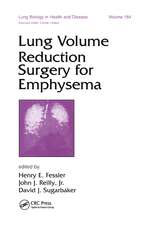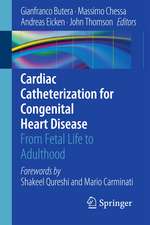Thymus Gland Pathology: Clinical, Diagnostic and Therapeutic Features
Editat de Corrado Lavini, Cesar A. Moran, Uliano Morandi, Rudolf Schoenhuberen Limba Engleză Paperback – 26 aug 2008
Preț: 983.87 lei
Preț vechi: 1035.66 lei
-5% Nou
Puncte Express: 1476
Preț estimativ în valută:
188.26€ • 196.56$ • 155.81£
188.26€ • 196.56$ • 155.81£
Carte tipărită la comandă
Livrare economică 01-07 aprilie
Preluare comenzi: 021 569.72.76
Specificații
ISBN-13: 9788847008274
ISBN-10: 8847008271
Pagini: 250
Ilustrații: XVIII, 274 p.
Greutate: 0.79 kg
Ediția:2008
Editura: Springer
Colecția Springer
Locul publicării:Milano, Italy
ISBN-10: 8847008271
Pagini: 250
Ilustrații: XVIII, 274 p.
Greutate: 0.79 kg
Ediția:2008
Editura: Springer
Colecția Springer
Locul publicării:Milano, Italy
Public țintă
Professional/practitionerDescriere
The thymus is a gland that over the last two centuries has generated great awareness not only from the anatomical perspective but also for the physiological and pat- logical roles it plays in many disease processes. Prior to the early studies on its th anatomy and physiology in the 18 century, the thymus was believed to perform - usual and curious functions such as purification of the nervous system, providing a protective cushion for the vasculature of the superior mediastinum, fetal nouri- ment, or more spiritual roles such as being the seat of the soul, among others. D- th ing the 19 century important anatomical/physiological studies took place focusing on the role of the thymus in pathological conditions. However, it was not until the th middle of the 19 century that a more comprehensive analysis of the role of the thymic gland and its role in pathogenesis began to emerge. Currently, while the knowledge gained on the diverse aspects of the thymic gland has furthered our understanding of its role in a gamut of processes, more knowledge is still being sought, and by no means is a full understanding of the gland’s physi- ogy and pathology complete. Different aspects, including its purported endocrine function, its association with other autoimmune diseases like multiple sclerosis, rheumatoid arthritis, and lupus erythematosus, among others, are under evaluation and research.
Cuprins
The thymus : a mysterious gland with a complex history.- Embriology and anatomy of the thymus gland.- Physiology and immunology of the thymus gland.- Congenital pathology.- Flogistic and hypertrophic pathology.- Benign and malign tumors.- Clinical features of thymus pathology.- Thymus and myasthenia gravis: Physiopathological and clinical aspects.- Radiologic diagnosis : X-ray, CT scan and NMR.- PET features.- Minimally invasive and surgical diagnosis.- Surgical anatomy of the thymus gland.- Anesthesiologic problems.- Conventional techniques: Cervicotomy. Median sternotomy. Transthoracic approach.- 'Open' videoassisted techniques: Cervicotomic approach. Subxiphoid approach with bilateral thoracoscopy. Cervicotomic and subxyphoid approach with bilateral thoracoscopy.- Totally endoscopic techniques: Right sided. Left sided. Bilateral approach with anterior chest wall lifting.- Robotic techniques.- Complex surgical interventions in superior cava vein syndrome.- Surgery of the thymus gland : re-interventions.- Chemotherapy in thymic neoplasms.- Radiotherapy in thymic neoplasms.- Complementary treatments in thymic neoplasms: Steroids. Octreotide.- Thymus-related myasthenia gravis multimodal treatment and follow up. Thymus transplantation.
Textul de pe ultima copertă
The thymus has been a mysterious gland for centuries. The awareness of its role has been progressing, in particular during the second half of the twentieth century.
The thymic pathology is related to several complex congenital, non-oncological, and oncological diseases. Many of these illnesses require a multidisciplinary approach thus involving several specialists: the surgeon, the neurologist, the anesthetist, and the pathologist. For example, myasthenia gravis—the most challenging disease deriving from a thymic trouble—requires an accurate and multimodal treatment. The oncologic pathology of the thymus is likewise complex, and involves also the oncologist and the radiotherapist. In cases of congenital thymic diseases, a transplantation of the thymus can be taken into consideration.
This volume is an update on the pathology of this gland and includes 24 chapters written by international and well-known experts. The whole thymic pathology is described and new concepts about the nosological classification and the thymic neoplasm staging system are reported. Some chapters are focused on the radiologic, mini-invasive, and surgical diagnosis, and other chapters deal with surgical and non-surgical treatments. Special chapters are devoted to myasthenia gravis and thymus transplantation.
The book will appeal to all the specialists involved in the treatment of thymic pathology, but can also be of interest to practitioners, and undergraduate and graduate students.
The thymic pathology is related to several complex congenital, non-oncological, and oncological diseases. Many of these illnesses require a multidisciplinary approach thus involving several specialists: the surgeon, the neurologist, the anesthetist, and the pathologist. For example, myasthenia gravis—the most challenging disease deriving from a thymic trouble—requires an accurate and multimodal treatment. The oncologic pathology of the thymus is likewise complex, and involves also the oncologist and the radiotherapist. In cases of congenital thymic diseases, a transplantation of the thymus can be taken into consideration.
This volume is an update on the pathology of this gland and includes 24 chapters written by international and well-known experts. The whole thymic pathology is described and new concepts about the nosological classification and the thymic neoplasm staging system are reported. Some chapters are focused on the radiologic, mini-invasive, and surgical diagnosis, and other chapters deal with surgical and non-surgical treatments. Special chapters are devoted to myasthenia gravis and thymus transplantation.
The book will appeal to all the specialists involved in the treatment of thymic pathology, but can also be of interest to practitioners, and undergraduate and graduate students.
Caracteristici
Updating monograph: the volume comprehends the most important pathologies of the thymus (congenital, flogistic and hypertrophic, neoplastic pathology) and presents the most recent surgical and non surgical techniques of treatment of thymus pathology
Multidisciplinar approach of the thymus pathology, suitable for several specialists as surgeons, neurologists, pathologists, radiologists and so on
Multidisciplinar approach of the thymus pathology, suitable for several specialists as surgeons, neurologists, pathologists, radiologists and so on













